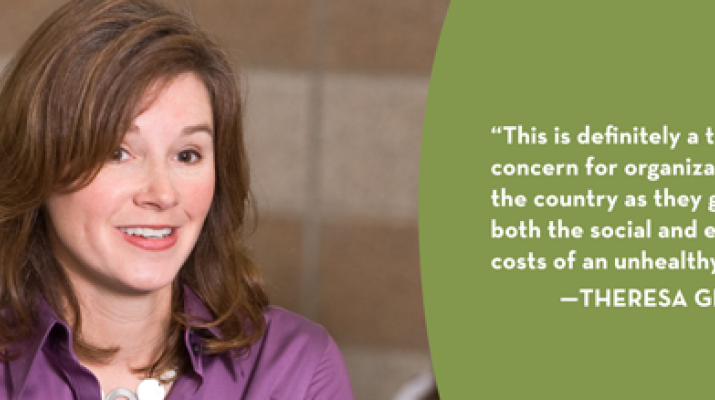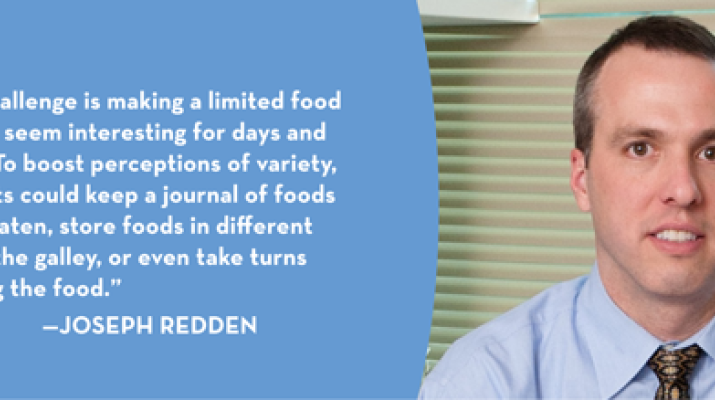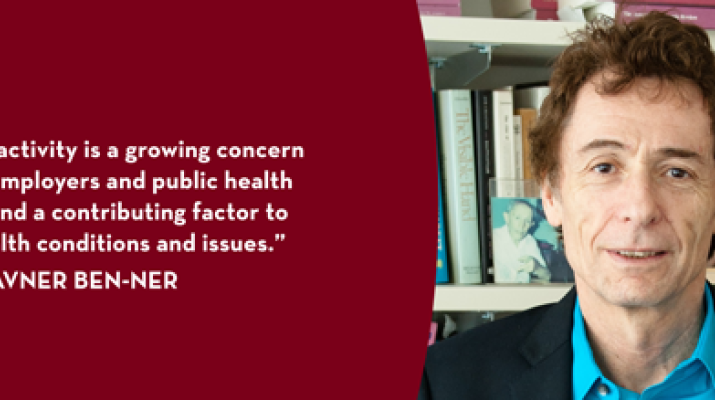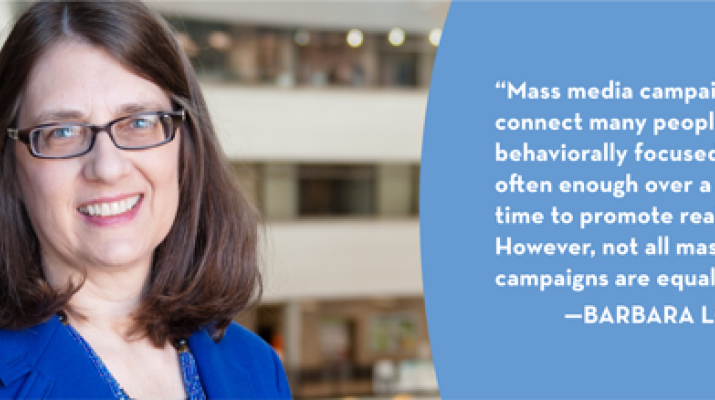
Shaping the Business of Health Care
Sunday, April 1, 2012
By Sue Wilson
The health care industry is at a crossroads. While scientific breakthroughs and technology innovations create new treatments and cures, rising costs and barriers to care raise critical issues. The Carlson School’s alumni, faculty members, and students are at the center of this perfect storm—leading organizations and initiatives, exploring research questions, shaping national policy, bringing innovative products and services to market, and educating the next generation of leaders. Through their focus on the business side of health care, these strategic leaders are influencing the future of the medical industry—across the country and around the world.
“Business acumen and critical-thinking skills are highly valued by today’s health care employers as they simultaneously embrace reforms and leverage innovations,” says George John, Associate Dean of Faculty and Research and General Mills/Paul S. Gerot Chair in Marketing. “With U.S. health spending comprising nearly 18 percent of GDP [According to OECD Health Data 2011, U.S. health spending was 17.4% of GDP in 2009], the medical industry is a key economic driver and an important source of employment for the Carlson School’s alumni and students.”
The school’s industry focus has kept pace with national and state economic trends. “In the 1970s, large computer manufacturers like Control Data, Sperry, and Gray dominated our market; and University of Minnesota classes, programs, and research supported and shaped this fast-growing industry,” says John. “Now, Minnesota is one of the country’s top markets for medical devices and health care; and meeting local and national needs for talent, knowledge, and innovation is a key University priority.”
Minnesota’s medical device manufacturing industry ranked second nationwide in employment in 2009 with more than 29,430 workers (Source: Minnesota Department of Employment and Economic Development.) “The University is supporting the development and commercialization of new medical treatments and technology through programs like Corridors of Discovery and the Biomedical Discovery District. The Carlson School is leaving its own footprint in this area through its relationships with health care business leaders, the intellectual resources of its faculty, and its specialized academic programs for students,” says John.
Blending Business Acumen with Industry Expertise
The Carlson School has a history of offering health care-focused classes as part of its curriculum. About a decade ago, the Master’s of Health Administration (MHA) program was moved to the school, then shifted back to the School of Public Health in 2005 to maximize its more clinical focus. After the move, former Carlson School Dean Larry Benveniste worked with Stephen Parente, current professor of finance and insurance, director of the Medical Industry Leadership Institute (MILI), and the Minnesota Insurance Industry Chair of Health Finance, to develop a medical specialization program that would complement the school’s business curriculum. MILI was created in late 2005 and continues under Parente’s direction.
Since MILI’s inception, 110 students have graduated with a health care specialization and seven courses now provide hands-on experience and knowledge in functional areas of the medical industry (finance, marketing, operations, information technology, and market valuation). Drawing on the University’s scientific, technical, policy, and ethics expertise, these courses provide collaborative, multidisciplinary perspectives. Experiential learning is a key program element; students typically work with health care clients through one of the Carlson School’s four Enterprise programs or analyze the market potential of new medical devices via MILI’s Valuation Laboratory course.
Preparing Students to Lead
“Health care needs new ideas and solutions that work,” says Parente, whose academic expertise is in health economics and insurance. “We are arming our students with the clinical knowledge and business skills necessary to design meaningful reforms; provide perspective on policy decisions; strengthen services, programs, and products; and shape the medical industry at every level.” Parente’s research has put him at the forefront of the national health care reform debate. He served as a health policy adviser for the 2008 presidential campaign, frequently testifies at congressional hearings on finance and insurance issues, and recently served as co-author of a Supreme Court Amicus brief on a health care-related case.
Another part of MILI’s mission is maintaining relationships with alumni and industry leaders on a global level. These connections enable executives, managers, and policymakers to easily access the leading-edge research and thought leadership of the Carlson School’s faculty members. The following is a round-up of some research on wellness in the workplace and the marketplace.

"This is definitely a topic of concern for organizations across the country as they grapple with both the social and economic costs of an unhealthy workplace."
The Many Moods of Job Performance
Theresa Glomb
McFarland Professor of Organizational Behavior, Professor, Department of Work and Organizations
If you are in a good mood, do you perform your job better? Professor Theresa Glomb’s research is exploring the answer to this question. Her recent studies on the role of work events in predicting mood and the role of mood in predicting on-the-job behavior have found interesting results:
- Mood is significantly related to both positive and negative work events. Negative events have five times the impact on mood as positive events, even though positive events are reported three to five times more frequently. (Miner, A. G.; Glomb, T. M.; & Hulin, C. L. – University of Illinois (2005). Experience sampling mood and its correlates at work. Journal of Organizational and Occupational Psychology, 78, 171-193.)
- In a call center, being in a positive mood was linked to five percent shorter call times. This effect was pronounced for individuals who experienced their moods with clarity. (Miner, A. G. – Target Corporation, & Glomb, T. M. (2010). State mood, task performance, and behavior at work: A within-persons approach. Organizational Behavior and Human Decision Processes, 112, 43-57.)
- Being in a negative mood leads to “organizational citizenship behaviors” (helping others at work) which in turn leads to a positive mood. In other words, “doing good” leads to “feeling good,” especially for extroverts. (Glomb, T. M.; Bhave, D. – Concordia University, Canada; Miner, A. – Target Corporation; and Wall, M., (2011). Doing good, feeling good: Examining the role of organizational citizenship behaviors in changing mood. Personnel Psychology, 64, 191-223.)
- Mindfulness can foster improved functioning at work, including improved self-regulation, enhanced relationships, and increased task performance and persistence. (Glomb, Duffy, & Bono (2011).)
- A relatively simple intervention—reflecting on and writing about three good things each day—can lower blood pressure and reduce stress and physical symptoms among health care workers. (Bono, Glomb, Shen, Kim, & Koch (revision invited).)
“These studies have shown that fairly small changes in employees’ work lives—being in a better mood, focusing on the positive things, being more mindful—can significantly improve well-being and work performance,” says Glomb. “This is definitely a topic of concern for organizations across the country as they grapple with both the social and economic costs of an unhealthy workplace.”

"Their challenge is making a limited food selection seem interesting for days and months. To boost perceptions of variety, astronauts could keep a journal of foods they've eaten, store foods in different areas of the galley, or even take turns preparing the food."
What Should We Eat on the Way to Mars?
Joseph Redden
Assistant Professor, Department of Marketing
Assistant Professor Joseph Redden is an expert on the topic of satiety. “Satiety occurs when you get bored in a repetitive situation,” he says. “It is the reason why it’s hard to follow a regimen like a restricted diet. You get bored with the food and eat something that’s not on the diet. The key to managing satiety is changing how you perceive the repeated experiences.” This is important for businesses to understand in order to keep consumers interested in their products longer.
Redden is applying his expertise in a novel way—as a co-investigator on a research project funded by NASA to study the factors that lead to satiety with food items on long-term space missions. (NASA Grant, “Factors Contributing to Food Acceptability on Long-term Space Missions,” co-investigator with Traci Mann and Zata Vickers). “It’s challenging for astronauts to get enough calories while they are in space and it’s important for them to eat enough to maintain their energy,” he says. “There are limited stores of food available and they get tired of eating the same items. Satiety will be a bigger problem on longer missions and our research is exploring ways to manage it.”
Redden and his fellow researchers are studying strategies to manage variety amnesia, which is when you forget what you’ve consumed between eating identical items. He explains, “If you go out to eat sushi every Friday night, you may tire of it. But you are forgetting the 20 meals you’ve eaten between the sushi dinners. Reminding yourself about the 20 meals you ate can alleviate your boredom.”
Redden says that astronauts eat like the rest of us; they eat their favorite foods first then get tired of them. “Their challenge is making a limited food selection seem interesting for days and months. To boost perceptions of variety, astronauts could keep a journal of foods they’ve eaten, store foods in different areas of the galley, or even take turns preparing the food,” he says. Redden’s work on satiety has many applications for individuals and businesses—whether they are in the U.S. or out of this world.

"Lack of activity is a growing concern for U.S. employers and public health officials and a contributing factor to many health conditions and issues."
The Right Step to Better Performance and Health
Avner Ben-Ner
Professor, Department of Work and Organizations
If physical inactivity lowers work performance and health indicators, what happens when workers increase their activity at work? Carlson School Professor Avner Ben-Ner recently teamed up with James Levine, Professor of Medicine, Physiology, and Bioengineering at the Mayo School of Medicine in Rochester, Minn., to explore this question. (Avner, B.N., & Paulson, D. – University of Texas Arlington, (2009). Working While Walking: Effects on Organizational Performance and Employee Well-Being, Preliminary technical report.)
A Twin Cities company agreed to have its office workers serve as test subjects and 40 of its employees volunteered to work while walking on a treadmill workstation created by Levine. The invention allows workers to continuously walk at a slow pace while completing daily tasks at a standup desk. The workers with treadmill desks—and 250 employees without them—answered weekly and quarterly surveys that assessed their well-being and work performance. Additionally, the workers using treadmill workstations wore a 24-hour device to measure their steps.
The year-long study found that using a treadmill desk at work increases the number of steps taken each day and improves health measures. While the work performance of treadmill users initially declined for several months while the employees adjusted to the new workstations, their performance eventually increased and exceeded initial levels. The increased activity was also linked to a greater number of positive moods and interactions with others. Employees who rarely exercised registered the greatest improvements in health outcomes while using the treadmill desks.
“Lack of activity is a growing concern for U.S. employers and public health officials and a contributing factor to many health conditions and issues,” Ben-Ner says. “This study suggests that increasing daily activity positively impacts health outcomes, especially for people who did not vigorously exercise before.”
Wellness in the Marketplace

"Mass media campaigns can connect many people to a behaviorally focused message often enough over a span of time to promote real change. However, not all mass media campaigns are equally effective."
Can Mass Media Campaigns Change Health Behaviors?
Barbara Loken
Professor and Chair, Department of Marketing
Professor Barbara Loken has spent much of her career studying the relationship between mass media campaigns and health behaviors like smoking. In a recent article, “Use of Mass Media Campaigns to Change Health Behavior,” she and her co-authors, Melanie A. Wakefield—Centre for Behavioral Research in Cancer, Australia, and Robert C. Hornik—University of Pennsylvania, found that mass media’s ability to connect with broad audiences through billboards, print media, radio, television, and the internet make it a positive way to change many types of health habits.
In a systematic review of national mass media campaigns, the authors concluded that such campaigns reach large segments of the population and have a relatively low cost per capita, making them an efficient way to communicate broad health messages. (Wakefield, M., Loken, B., & Hornik, R., (2010). Use of mass media campaigns to change health behavior, The Lancet, Vol. 376, Issue 9748, Pages 1261-1271.) “The potential of such campaigns is in their breadth and duration,” says Loken. “Mass media campaigns can connect many people to a behaviorally focused message often enough over a span of time to promote real change. However, not all mass media campaigns are equally effective.”
The research showed that programs promoting one-time behaviors such as getting health screenings or vaccinations were generally more fruitful than those that tackled significant behavior changes like adopting new eating habits. “While mass media campaigns are helpful in initially changing these entrenched behaviors, the behaviors revert back once the campaign ends. More sustained campaigns are needed to change them. Public policy additions are also effective. For example, seat belt and drunk-driving laws coupled with mass media campaigns are more impactful than either the law or the mass media component alone.
“To create effective mass-media health campaigns that generate lasting change, marketing managers must have sufficient resources to invest over time and make sure the necessary community resources are available,” says Loken.

"Our study found that allowing the purchase of health insurance across state lines under all three scenarios significantly reduced the number of uninsured by providing more affordable premiums."
Building the Case for a National Health Insurance Market
Stephen Parente
Minnesota Insurance Industry Chair of Health Finance; Director of the Medical Industry Leadership Institute; and Professor, Department of Finance
Would allowing the purchase of health insurance across state lines give millions of people new access to affordable insurance? A recent study by Stephen Parente and co-authors Roger Feldman, Jean Abraham, and Wendy Xu, all from the University’s School of Public Health, simulated the impact of a national market for individual health coverage and provided advice to policymakers regarding the strengths and weaknesses of such a proposal. (Parente, S., Feldman, R., Abraham, J.M., & Xu, Wendy. “Consumer Response to a National Marketplace for Individual Insurance.” Journal of Risk and Insurance, Volume 78, Issue 2, pages 389–411, June 2011.)
Researchers developed three scenarios: Competition among the five largest states, competition among all 50 states, and competition within regions. The simulations depicted the regulatory environment of the individual insurance market in each state, identified the marginal cost of state regulations, and calculated the premiums, adjusting for the effects of state regulations.
“Our study found that allowing the purchase of health insurance across state lines under all three scenarios significantly reduced the number of uninsured by providing more affordable premiums,” Parente says. “While all three models offered benefits and disadvantages, the most practical, politically acceptable plan was the creation of regional markets. As expected, states with the highest regulatory burden had the greatest consumer movement to a less-regulated state. For example, consumers from New Jersey, the most expensive state in the country for individual insurance, could purchase insurance from Texas for a cost of 55 percent less and from Alabama for 77 percent less.”
The study concluded that a national market would lead to substantially more heath care access, which should lead to health improvements among the vulnerable populations that cannot afford health insurance. This research was spotlighted in an August 2008 Wall Street Journal article, “We Need a National Market for Health Insurance,” by Grace-Marie Turner and presented by Parente in testimony before the U.S. House of Representatives, Energy & Commerce, Health Subcommittee, in May 2011, June 2009, and September 2008.